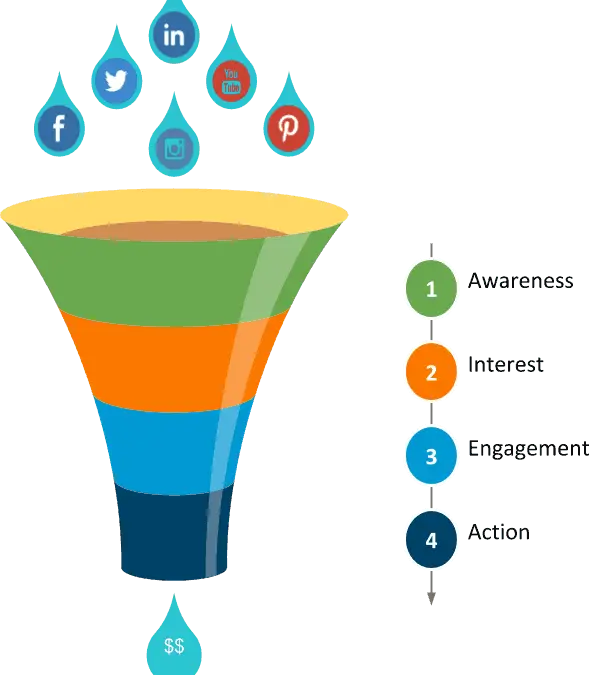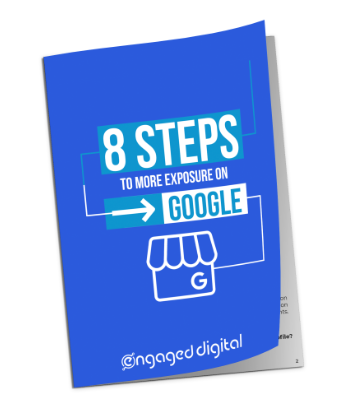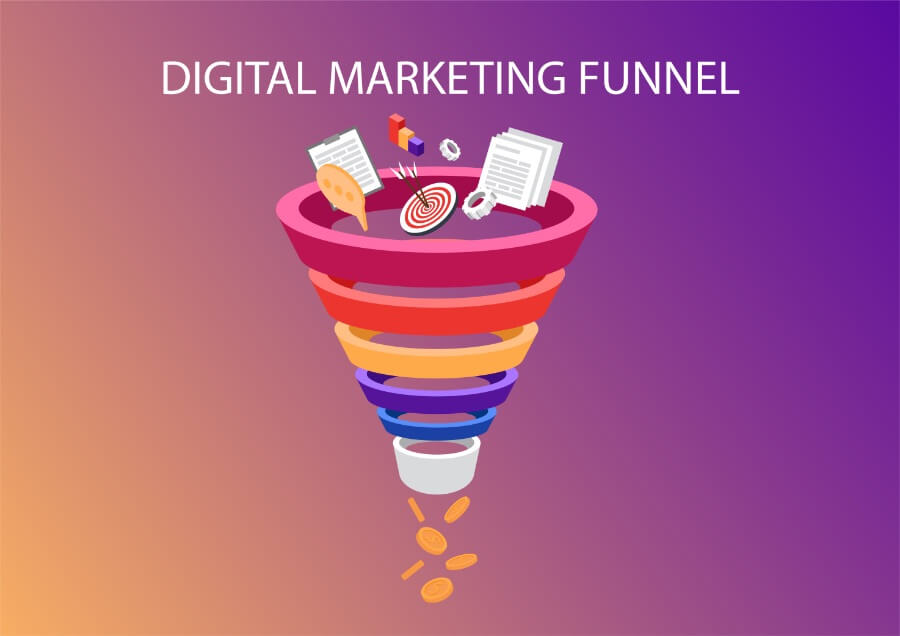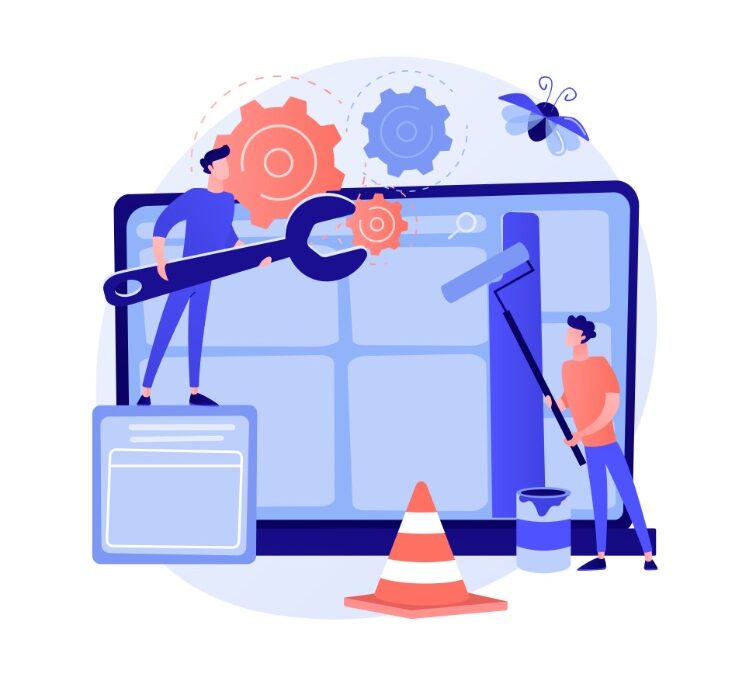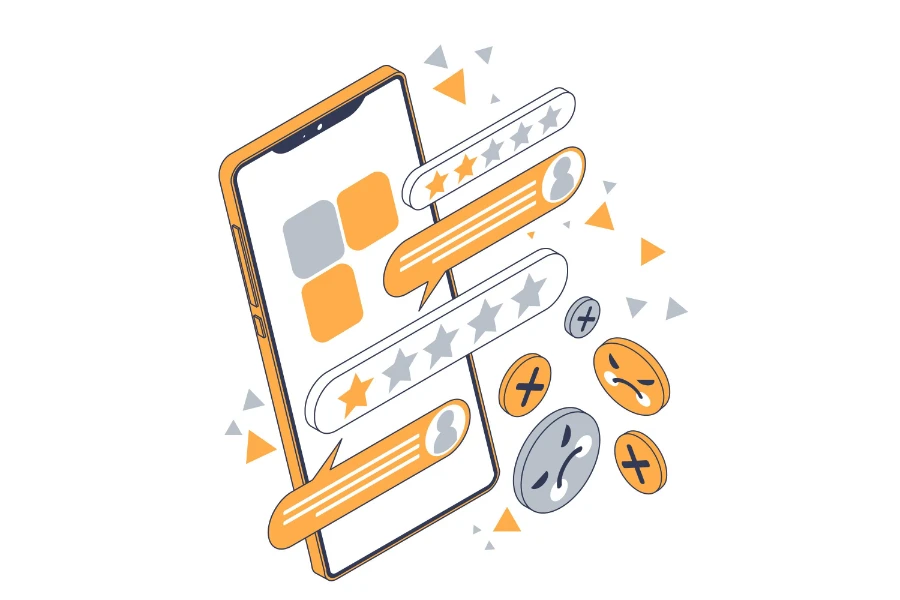What is a Social Media Marketing Funnel?
Like a traditional marketing funnel, a social media marketing funnel represents the steps a business’ prospects may take to eventually become a customer. The difference being that social media is woven into the process. Think of your funnel as a customer journey that starts with social media.
Like a ‘real-life’ funnel, the social media marketing funnel is bigger at the top and it becomes smaller (has fewer prospects in it) as people move through the steps.
Because funnels can and should be customized for individual companies and campaigns, there is a lot of confusion as to what a funnel should look like. There are typically 4 stages of the social media marketing funnel, which are:
Awareness
Interest
Engagement
Action
Advocacy
What part of the funnel is social media?
At first glance, it may seem like social media would be most useful at the top of the funnel (TOFU), to drive prospects into the funnel, yet social media’s true power is realized when it is used throughout the entire funnel. Furthermore, using social media in different ways at different stages will boost the chance of converting someone into a customer.
So, here is what the 4 stages may look like in a social media marketing funnel:
- Awareness: There are 2 parts to this for the prospect; they are aware of their own problem or challenge and they are made aware of your solution via published content, advertising or outreach, etc.
- Interest: Prospects may express interest in a variety of ways:
- Click a link to visit your website
- Click a link to an article from your blog
- Send you a direct message, retweet content of yours, like or share your content with others
- Click a lead magnet link in a social media post
- Participate in a contest
- Add you to a list
- Engagement: This is a crucial stage in the marketing funnel and typically where a lot of people drop the ball. You need to make sure you are engaging with your prospects and getting them to engage with you. Here are some typical engagement activities:
- Direct messages via social media channels.
- Likes and/or sharing content
- Mentions in posts or comments
- Add to List or Group and communication through these channels
- Email – If they have provided their contact information, you should be sending personalized and customized emails related to the solutions your product or service can provide.
- Webinars
- Demos
- Action: Conversion – They become a customer. You must continue to communicate with them and provide value beyond the purchase of your product or service. Here’s how:
- Email marketing/drip campaigns
- Share relevant articles with them via social channels
- Create a private Facebook Group or LinkedIn Group and provide additional information to your members.
- Create a channel for them to be and advocate for your products or services
- Advocacy: This is the stage where you could see a prospect become an advocate for your product or services; someone who will be willing to share their experience with others. This is done through:
- Reviews
- Recommendations
- Sharing content
- Participating in discussions and/or Q&A sessions on social media channels
- Hosting virtual events
Ready to build your social media marketing funnel?
There are 6 steps you need to take. First though, let’s go ahead and flip your funnel over and start with the end in mind.
1. Start With A Goal
Before you can build out a good social media marketing funnel, you need to establish what you want to get out of it. For your goal, be as specific as you can. Merely stating that you want to get more subscribers to your list will not be good enough. You need to dig a little deeper and specify the types of subscribers (qualified leads) you’d like to get, the amount your want to convert, as well as the overall number of clicks and page visits. Use the S.M.A.R.T. goal system to establish your goals. Tracking this type of data over time will help you fine tune this and future campaigns.
2. Create A Lead Magnet
A lead magnet can be many things depending on your business and your goals. What you should look to produce is something that will help attract the right type of person and something of high value that you can offer for free. Lead magnets, such as ebooks, checklists, etc. are highly effective items that can be used to attract potential clients. Content in the form of articles, videos, newsletters, and infographics can also be used, but just make sure you include a call to action (CTA) with these types of assets, so you can drive them to a signup form. Remember, you are looking to get their contact information.
3. Create A Landing Page And Contact Capture Form
What I am referring to here is a ‘squeeze page’ that your prospects land on. The content on this ‘landing page’ should focus on your ideal prospects and you should include the following:
- A Signup form – the more information you request, the less likely they are to provide it and hit submit, so keep it simple and short
- A list of your target’s pain points and challenges that you can solve
- No website menu or links that would take them away from your page. Remember, there is one reason you want them on your page and that’s to fill out your form.
4. Create A Follow-up Sequence
After you get prospects to your landing page and provide you with their contact information, you don’t want to leave them hanging….you need to have a follow-up process in place. On average, it takes about 7 touches with a lead before they convert to a customer. This ‘lead nurturing’ process should be designed to build trust and provide value. Start off with a soft touch and move towards your sales message. There are many marketing automation/email marketing tools available to help with this. Here are some of our favorites:
- Ontraport – All in one tool that includes email marketing, marketing automation, landing pages and signup forms.
- ActiveCampaign – Another all in one tool that includes a visual, drag and drop campaign builder.
- Mailshake – A powerful cold email marketing tool with a low entry cost.
- Nimble CRM (free trial) – Nimble is a social CRM tool that allows for bulk emailing, as well as messaging via social media channels.
5. Create A Content Strategy
You now have the bulk of your social media marketing funnel set up, but how do you get people into it? If you are posting regularly to your social media accounts, start including posts to promote your lead magnet(s). Create multiple versions and test to see which ones are working the best. This can be tracked with the use of UTM codes and A/B testing. Over time, you can fine tune your message to get better results. Here are additional steps you should take:
- Pin your promotional post to your Facebook and Twitter pages and use an enticing image to improve the results. Make sure you use the correct image size for each social network, as well.
- This is more of a manual process, but reach out to prospects via direct messages on Twitter, Facebook, and LinkedIn. This will take a little more time, but you can be more specific with your targets and should be able to get a higher conversion rate for these people.
- Run ads on your selected social channels. If your targets are on Facebook, you are lucky, as Facebook is the king in this space. Running ads on Facebook won’t break your bank either. Test out a couple of other social channels where your targets are active and see which one gets the most traction.
- Social lead generation, along with some automation, is another option for driving potential customers to your landing page. I’ll save the details of social lead generation for another article, but it can make a huge difference in your campaigns. At a minimum, you should be connecting with your targets’ social accounts a couple of times each week. Feel free to reach out if you would like to discuss this in more detail with me.
6. Create A Post-Conversion Strategy
Your funnel should not end with a sale or conversion. You need to think about retention and upselling. Social media can be used for this as well. For many businesses, it makes sense to create a Twitter support account or a Facebook Group for customers. These types of pages allow you to stay in touch with clients on a larger scale and give you another channel to upsell and provide special offers. Making customers feel ‘special’ by adding them to your group will lead to referrals and long-term business relationships.
In conclusion, using social media throughout your marketing and sales process will enhance the overall experience for your leads and it will help improve your conversion rates at a low cost. Everyone’s business is a little different, so make sure you customize your social media marketing funnel and add the right actions to the right stage of your buyer’s journey.
By the way, if you are unsure how to do this or are open to outsourcing this process, please get in touch with us by email at info@engageddigital.com. You can also jump into our funnel by filling out this form: Contact Us

